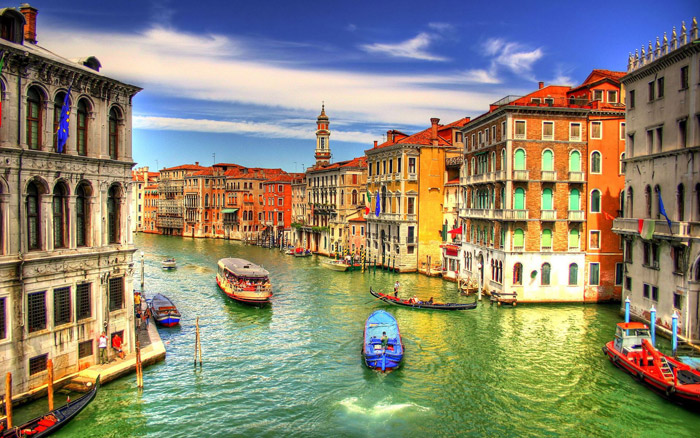 Where to go
Where to go
Guide ITALY covers the provinces north of Rome, (including Rome and Lazio) except Umbria and the Marche. It is the most famous and most visited region of Italy. Piedmont and Lombardy, in the northwest, constitute the least Italian part of the country, and Turin and Milan, are the largest and richest Italian cities. The southern ends of these regions (especially Lombardy) are flat and unininteresting landscape, but the presence of mountains in the north gives the landscape a more expressive character. Skiing and hiking reign supreme there, and surrounded by mountains, the lakes of Lombardy are a traditional tourist region. Liguria, small coastal region south of Piedmont, it has long been known as the "Italian Riviera" and therefore for most of the summer season it is full of sun-thirsty sunbathers. Still, it's a beautiful stretch of coastline, and the capital of this region, Genoa, is a busy, a seaport with a long tradition.
Most of the most beautiful mountains are located in two small regions. At the northwestern tip of Italy is surrounded by the highest peaks of the Alps (Matterhorn and Mont Blanc), small, bilingual region of Valle d'Aosta, where some of the most popular ski resorts are located. Trentino-Alto Adige in the east is the second bilingual region, which the closer to the state border, the more it resembles Tyrol. The Dolomites mountain range begins here, where the largest national park in Italy is located, Stelvio, with some of the finest landscapes. The Dolomites also stretch along the northeastern regions of Venice and Friuli venezia Giulia, although there the attention of tourists is of course attracted by Venice itself. It is a unique city, and his fame is not exaggerated at all, which means, that there is no chance of loneliness there. If someone does not like crowds, can visit a number of nearby, historical cities. Verona, Padua and Vicenza are interesting in themselves, although of course overshadowed by the wealth of Venice. The southern region of Emilia-Romagna is at the centre of Italy's post-war industrial development and therefore the standard of living here is the same as in Piedmont and Lombardy., although, oddly enough, Until recently, it was one of the main centers of the Communist Party.. The coast of this region is very popular in Italy, and Rimini is one of the most famous, although not very elegant summer resorts. So it's better to avoid the local beaches and visit the ancient buildings of Ravenna, Ferrara and Parma. The capital of the region, Bologna is one of the busiest, although the least appreciated by tourists cities.
Tuscany, with a undulating landscape and cities full of masterpieces of art — Florence, Pisa and Siena and most closely corresponds to the popular image of the country always attracts crowds of tourists. Lazio already gives a foretaste of the South. Sharp landscapes of this mostly poor and forgotten region, contrast with the milder beauty of other regions of central Italy. The actual focal point of Lazio is Rome, the capital of Italy and the only city in the country, which belongs neither to north nor to noon, and its inhabitants proudly cut themselves off from the antagonisms between these parts of the country. There is no other place like Rome: it is a wonderful city, and its monuments surpass all other Italian cities.
Climate and when to go
Italy's climate is one of the most favorable in the world: summers are usually warm and dry and winters are mild. However, there are big differences between regions. The northern part of the country has a more temperate climate, and the southern, more Mediterranean. Summers are hot and dry along the coasts (especially in the south), and cool in mountainous areas, mainly in the Alps and the Apennines. Winters are mild south of Rome, but in the north they can be almost as cold as in Poland. In January, the cold and windy plains of Lombardy and Emilia-Romagna may be particularly affected..
If you plan to visit areas popular with tourists (especially bathing areas), avoid July and August, because then the heat prevails, and the beaches are the most crowded. In August, Italians go on vacation and that is why the squeeze in holiday resorts is then the greatest, and the main tourist cities, Rome, Florence or Venice, then they take on a bit of an artificial character, because practically the only people, who can be found there then are tourists. So the best times to visit Italy due to the weather and congestion are from the beginning of April to the end of June., and from the beginning of September to the end of October. If you plan to swim in the sea, you have to remember, that outside the summer months sufficiently warm water can be found only in the south of the country.